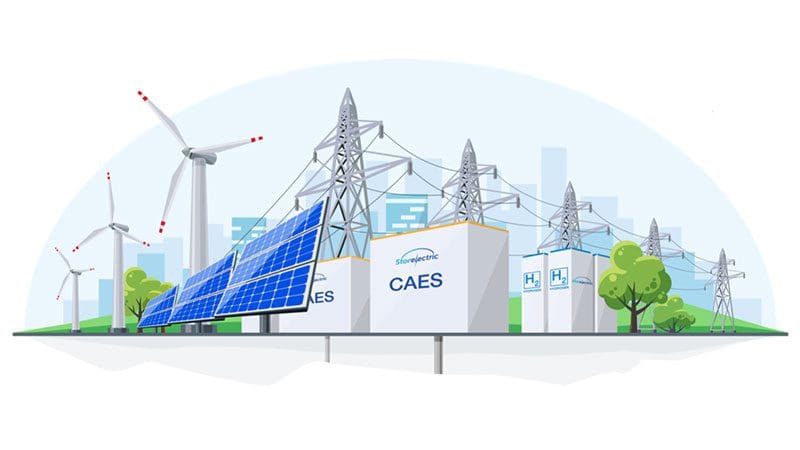Storelectric’s Hydrogen Offering
Until now, our website has under-sold our hydrogen capabilities, which are strong, including:
- Hydrogen CAES
- Hydrogen storage
- CAES and Hydrogen Projects
- High temperature hydrogen patent
- Consultations
We see hydrogen and CAES as entirely complementary and not competing much. Please read more here.
Storelectric Featured in Net Zero Toolkit
The Solar Impulse Foundation’s “Toolkit” (also called a “solutions explorer”) to help decision-makers meet their climate goals post COP26. This enables people to find solutions that have been validated exhaustively, among which is ours.
The Gas Crisis
It is clear that the current astronomical gas prices world-wide are alerting people to how dependent we are on it for our power. This bodes ill for climate change: if we can’t kick the gas habit, we’ll never stop global warming because CCS/CCUS will never be either effective or affordable. The only way to achieve net Zero, and to kick the gas habit, is to have sufficient large-scale long-duration storage to ride out the current weather pattern which is a small kalte Dunkelflaute. A previous blog explained how to calculate the need for storage. And keeping nuclear energy in the mix to supply baseload demand would vastly reduce the amount of wind, solar and storage needed: 1GW nuclear baseload is approximately equivalent to 3GW wind, 6-8GW solar and their associated storage.
National Grid Lays Out Reinforcement Needs to 2032
National Grid’s Electricity Ten Year Statement (ETYS) lays out enormous grid reinforcement needs to cope with increased intermittent renewable generation in Scotland and the East, with knock-on effects throughout the country. This investment, costing tens of billions, would be largely unneccessary, with sufficient large-scale, long-duration, inertial storage on the grid.
This has world-wide relevance: unless other grids develop appropriate regulation and storage, they will incur similar costs as their renewable penetration increases.
Highlights include:
- Scottish renewable generation growing to 30-40GW, versus 6GW peak demand, “A doubling at least of transfer requirements” – then doubling again by 2050;
- Similar growth in the East of England;
- Increasing inerconnection to 18GW to cope with intermittency, even though interconnectors cannot do this job;
- Vast unquantified increases in the grid in the SouthEast to cope with simultaneous peak demand and peak renewable generation / exports;
- There will be further unspecified reinforcements and investment to cope with the loss of synchronous generation, i.e. for grid stability – we believe that these are unspecified because the grid doesn’t know how it can satisfactorily address this issue, which will be phenomenally expensive if not addressed with synchronous storage;
- We believe that even these, and consequent grid instability and brittleness, are greatly under-stated because National Grid continues to rely on “probabilistic analysis” (ETYS p58) rather than planning for real-world extreme scenarios;
- Even these astronomical investment requirements will increase if the country achieves the government’s upgraded target of 40GW offshore wind by 2030.
National Grid’s Distributed ReStart Project
Also with world-wide relevance, this project looks at how to re-start a Net Zero grid using distributed resources. Even though it finds numerous issues that make it excessively costly, complex and problematical, they persist in the “groupthink” which also infects Ofgem, whose approach to the entire project is neither critical nor regulatory but managerial. The only reasonable, cost-effective and manageable solution is to focus on incentivising the construction of transmission-connected inertial plants with black start capability, such as hydro, biomass, nuclear and inertial storage.
Click here for the full article.


